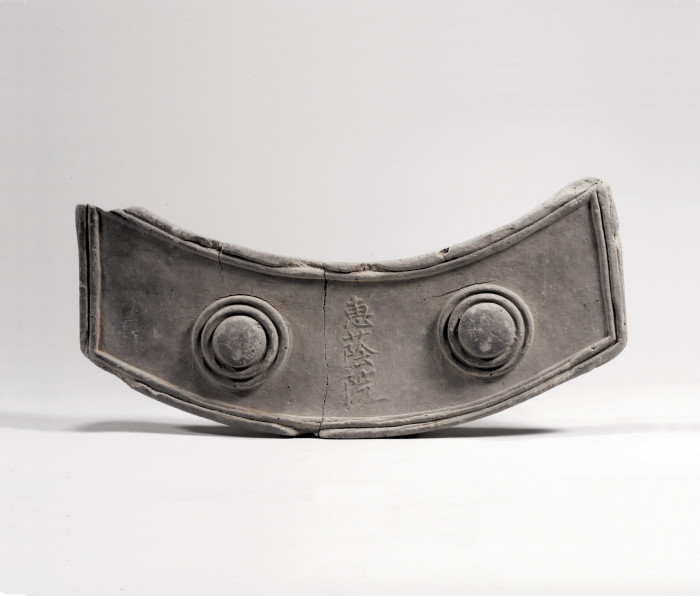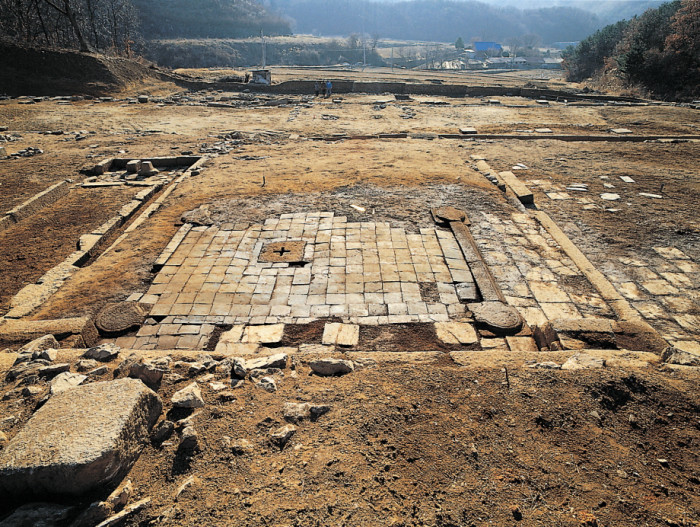The primary means of transportation used by the state during the Goryeo period (918-1392) included the roads called Yeokdo (or Yeongno, literally meaning "station route") whose main function was linking post stations. According to The History of Goryeo (Goryeosa, 1451), the dynasty operated a total of twenty-two station routes connecting 525 stations throughout the country. The stations were originally established to ensure convenience for the officials traveling to carry out their official duties and effective transmission of government orders. These government-operated stations were used, almost exclusively, by high-ranking officials and Buddhist leaders. Low-ranking officials didn't tend to use them much even when they were traveling on public duties. There were other facilities provided for the junior officials traveling along the station routes. Called Won, meaning "guesthouse", these facilities were originally established by local Buddhist communities as part of their effort to provide humanitarian aid for citizens who needed help, such as those suffering from extreme poverty, ill wayfarers and travelers. Though rare, some of these "guesthouses" were established through strong support from the government of Goryeo.
It was during the mid-Goryeo period that the dynasty built one of its secondary capitals, Namgyeong ("Southern Capital") in present-day Seoul, and developed it into a major junction linking the principal capital, Gaegyeong (present-day Gaeseong), with the southern provinces. In the earlier period, government messengers dispatched from the capital to the south took the route linking Jangdan, Jeokseong and Yangju. The development of Namgyeong during the mid-Goryeo period, however, led government travelers to prefer the route connecting the capital with Paju and Goyang. The development of the new route also resulted in a gradual increase of travelers between the two major Goryeo cities.
What lacked for the travelers using the Southern Capital Route (Namgyeonggil) was a facility which would provide a safe haven for shelter and food. The area around Hyeeungnyeong Pass was unsafe for the travelers using the route because of its remoteness and the frequent appearance of violent bandits. The government of Goryeo felt it necessary to build a facility in the area to ensure safety and convenience for the travelers by removing the threat from the outlaws.

A view to the Hyeeumwon Guesthouse site /Courtesy of the city administration of Paju
|
In 1120, King Yejong (r. 1105-1122) issued an order to one of his closest aides, Yi So-cheon, to build a guesthouse at Hyeeumnyeong Pass in present-day Yongmi-ri, Paju-si. The king's order was promptly carried out, which resulted in the construction of the guesthouse, named Hyeeumwon, two years later thanks to the help of the local Buddhist community led by two monks, Eungje and Mincheong. The project, however, needed to be extended because the king wanted his own lodge to stay when he visited the area.
When the construction of the guesthouse, Hyeeumwon, finally came to a finish with furnishments provided by the royal family, it consisted of a royal villa (haenggung), Buddhist temple and the travelers' guesthouse. The political turbulence of the Goryeo dynasty following the enthronement of King Injong (r. 1122-1146), the revolts of Yi Ja-gyeom (1126) and Myocheong (1135) in particular, mired the operation of the guesthouse into a period of great difficulty. Historians believe that it was after 1140 that the guesthouse began to overcome the tough times as the support from the royal family resumed thanks to the active involvement by King Injong's consort, Empress Dowager Gongye (1109-1183). The recommenced patronage of the Goryeo court helped Hyeeumwon repair its facilities and regain the vitality of earlier times. It was probably during this period that Kim Bu-sik (1075-1151), the compiler of The History of the Three Kingdoms (Samguksagi), wrote the "Restoration of Hyeeumsa Temple" (Hyeeumsa sinchanggi) to mark the revival of the guesthouse.

Roof-end tile with the "Hyeeumwon (惠陰院)" inscription excavated at the Hyeeumwon site / Courtesy of the Cultural Heritage Administration
|
Despite the record of the guesthouse in old texts, little is known about its exact location. It was in 1999 that the location revealed itself with the discovery of a ceramic roof-end tile inscribed with the name of the institution. A step-by-step excavation project took place at the site from 2001 to 2015, resulting in the discovery of the institution's entire layout and historical background.

Remains of a Goryeo building discovered at the Hyeeumwon site/ Courtesy of the Cultural Heritage Administration
|
The excavation of the site revealed that the guesthouse was built on an area of 23,930㎡, containing eleven building sites erected on the ground prepared by cutting into a mountain ridge in the form of steps. It also showed that the guesthouse was enclosed by walls covered with tile roofs and contained a total of thirty-seven buildings.
The layout of the Hyeeumwon site shows a typical example of the architectural characteristics of the Goryeo palace. The arrangement and layout of the buildings as well as the artifacts unearthed at the site resemble those of Manwoldae, the royal palace of Goryeo located in Gaeseong. Notably, it contained artificial ponds and channels arranged between buildings and were designed to make use of water drawn from a nearby valley, creating the landscape in which the entire guesthouse was floating on water. / ◎ Seo Yeong-il(Director, Hanbaek Research Institute for Cultural Heritage)
<ggc의 모든 콘텐츠는 저작권법의 보호를 받습니다.>


